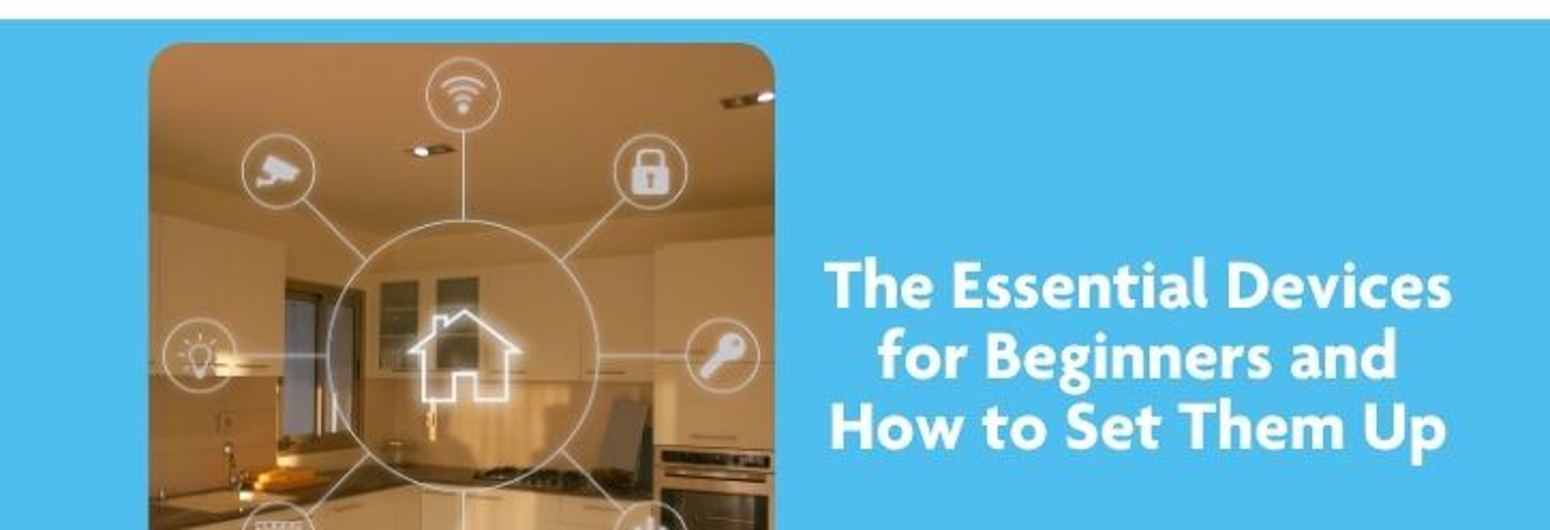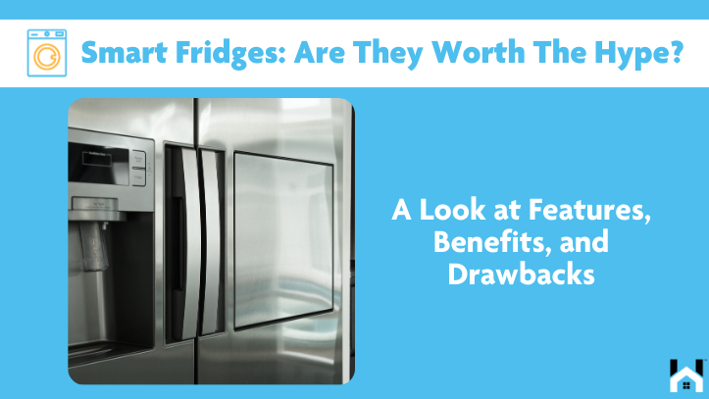If you are considering transforming your living space into a smart home but are uncertain about where to begin, a Smart Home Starter Kit may be the perfect solution for you. This kit provides all the essential devices needed to embark on your journey toward a more connected and efficient lifestyle.
In this guide, you will find a breakdown of the must-have devices for your kit, a step-by-step walkthrough of the setup process, an overview of the numerous benefits, a discussion of potential challenges, and suggestions for expanding your system.
Explore this guide to learn how to elevate your home into a smart haven.
What is a Smart Home Starter Kit?
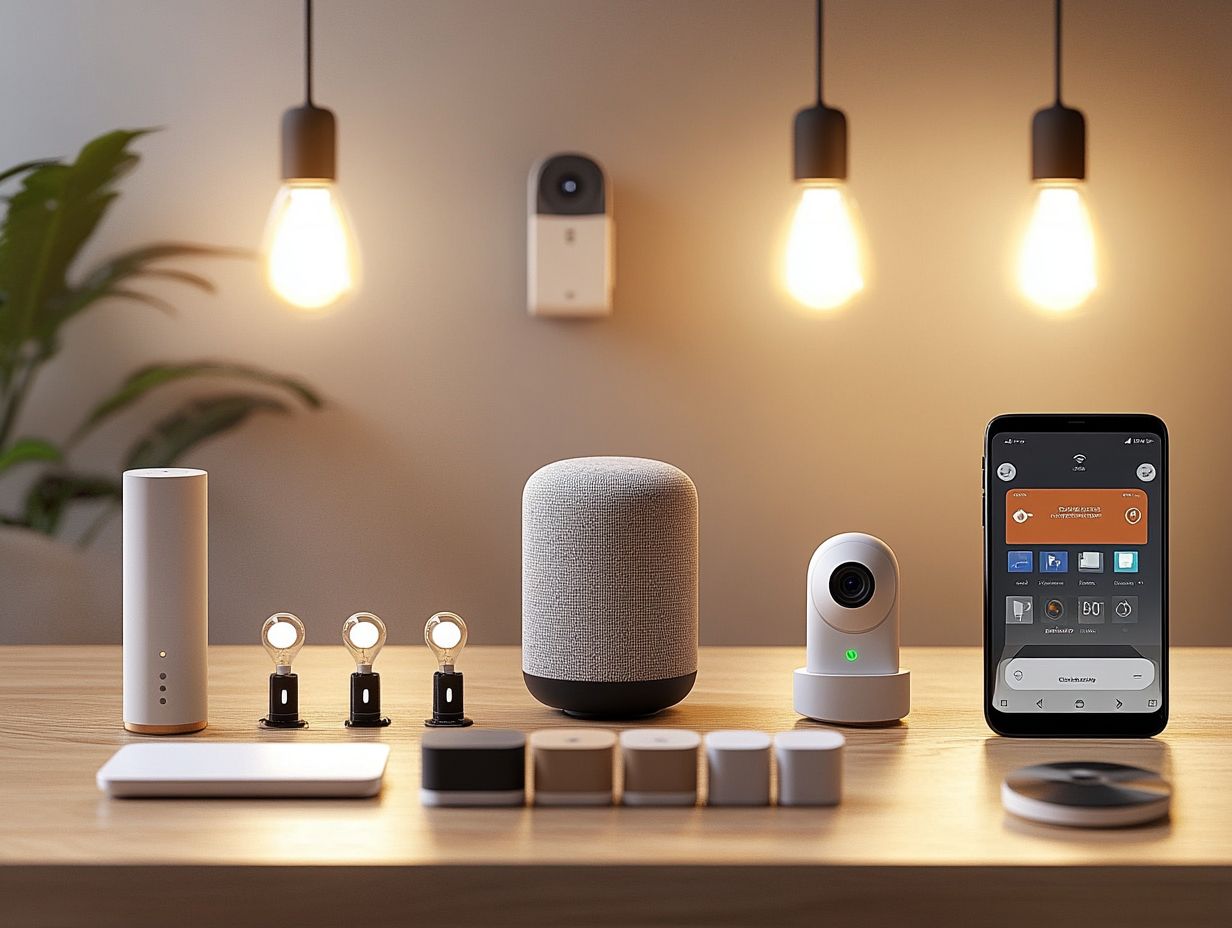
A Smart Home Starter Kit is a thoughtfully curated collection of essential devices aimed at transforming your living space into a connected hub that enhances convenience and efficiency.
Typically, these kits come equipped with IoT devices like smart lights, smart plugs, and a smart thermostat, all of which can be easily controlled remotely via a mobile app or through voice commands.
Thanks to the swift advancements in technology, setting up a smart home has become more accessible than ever, making it an excellent solution for those new to home automation.
Essential Devices for a Smart Home Starter Kit
Building an effective Smart Home Starter Kit involves selecting essential devices that enhance both automation and connectivity. Key components often include:
- Smart lights, which provide control over ambient lighting,
- Smart plugs that allow for remote access to appliances,
- Smart thermostats that facilitate energy-efficient temperature management.
By incorporating these devices, beginners can seamlessly begin their journey into home automation, leading to improved comfort and greater control within their living space.
Overview of Must-Have Devices
An overview of the essential devices for your Smart Home Starter Kit includes a range of smart home technologies that enhance both functionality and security. Key components—such as smart sensors for home monitoring, smart cameras for security, and smart speakers for voice control—can significantly elevate the overall smart home experience.
By incorporating these technologies, homeowners gain greater control over their environment while promoting energy efficiency and safety.
Take smart sensors, for example; they play a vital role in proactively detecting environmental changes and potential threats, such as water leaks or unexpected motion. This capability allows homeowners to respond swiftly to any issues that arise.
Smart cameras, on the other hand, provide real-time surveillance and send alerts when unusual movements are detected, ensuring your property remains secure at all hours.
Additionally, smart speakers enhance communication and coordination among devices, enabling users to control everything from lighting to thermostats with simple voice commands.
This interconnectedness of smart home technology not only simplifies daily routines but also fosters a more responsive living space that adapts to individual preferences and needs.
How to Set Up Your Smart Home Starter Kit
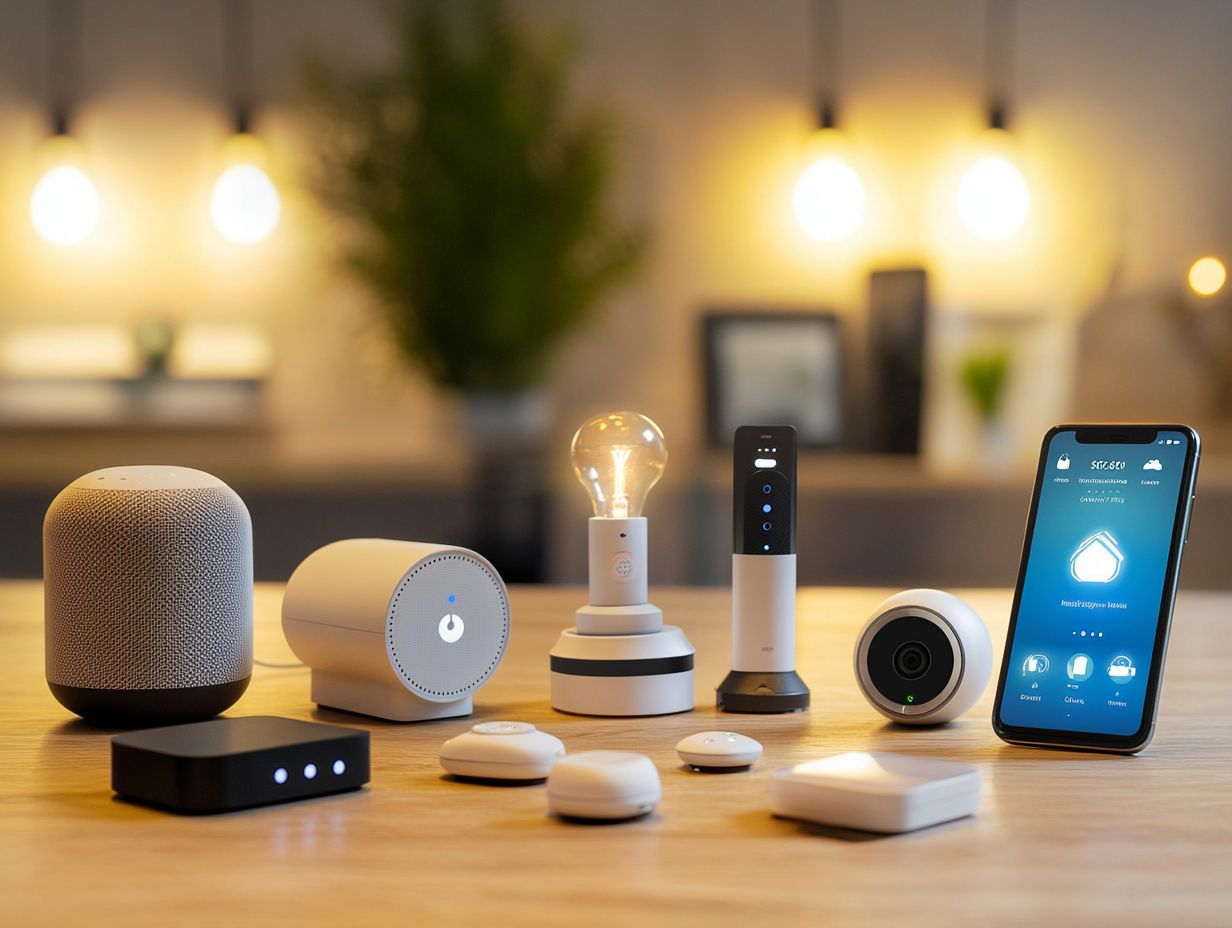
Setting up a Smart Home Starter Kit is an exciting journey that involves several steps aimed at ensuring a smooth installation. The process usually starts with configuring your home network, followed by connecting various smart devices—like smart lights, smart plugs, and a smart thermostat—to a smart hub or mobile app.
With clear installation guides and user manuals readily available, even those who are new to this can navigate the setup process effortlessly, transforming their living spaces into smart homes in no time.
Guide to Installation and Configuration
A comprehensive guide to installation and configuration is crucial for successfully setting up your Smart Home Starter Kit. To begin, it's important to read the installation guides provided for each device. These guides typically include instructions for connecting to your home network as well as information about the necessary mobile app for managing your devices.
Once you have that set up, you can configure automation rules to enhance your smart home experience, enabling features like voice control and energy efficiency.
By following these initial steps, you will ensure that all devices are seamlessly integrated into your existing network. After connecting your devices, the next step is to download the recommended mobile app, which acts as the central hub for managing each smart device. It's essential to enable the necessary permissions and follow the on-screen prompts to sync your devices, facilitating easy control from your smartphone or tablet.
Additionally, be sure to explore the settings for each device to customize your preferences, including scheduling and remote access. By taking the time to fine-tune these settings, users can fully utilize the automation features, increasing convenience and adding important layers of security to their smart living environment.
Benefits of a Smart Home Starter Kit
The benefits of a Smart Home Starter Kit are quite extensive, making it an appealing choice for both those new to smart technology and more experienced users.
One of the key advantages is the convenience it provides; with smart home devices such as smart lights and plugs, individuals can manage their home environment from virtually anywhere using a mobile app or voice commands.
Furthermore, the efficiency gained through energy monitoring and automation can lead to substantial cost savings over time, ultimately enhancing overall comfort and satisfaction in the home.
Convenience and Efficiency

Convenience and efficiency are two key features of a Smart Home Starter Kit, significantly enhancing the user experience in daily life. With automation devices like smart sensors and smart cameras, homeowners can easily manage their home environment, ensuring that comfort and security are always within reach. Features such as remote access and voice control streamline household tasks, allowing users to concentrate on what truly matters.
For instance, consider coming home after a long day: smart lighting can automatically adjust to a warm, welcoming hue, while the thermostat ensures the perfect temperature, all orchestrated by your smart home system. Security is enhanced by smart cameras that provide real-time alerts to your smartphone, keeping you informed of any unusual activity.
Furthermore, integrating smart speakers allows for voice commands to control various functions, such as locking doors or turning off appliances, offering unparalleled convenience. This seamless interaction between devices not only optimizes daily routines but also transforms mundane chores into effortless tasks, making the vision of a truly automated home a tangible reality.
Cost Savings
Cost savings represent a significant advantage of adopting a Smart Home Starter Kit, primarily through improved energy efficiency and innovative smart home solutions. Homeowners can effectively track and manage their energy consumption by utilizing devices such as smart thermostats and energy-monitoring sensors. This not only leads to lower utility bills but also supports a more sustainable lifestyle.
Additionally, these intelligent systems can optimize energy usage proactively by adjusting settings based on real-time data, which helps minimize waste during peak demand hours. For example, many smart thermostats are designed to learn user preferences and automatically adjust heating and cooling for maximum comfort while simultaneously reducing energy expenditure.
Integrating smart lighting systems further contributes to energy savings by allowing residents to control lighting remotely or set schedules that maximize the use of natural light. By embracing these advanced technologies, homeowners not only achieve significant savings but also play an essential role in reducing their carbon footprint, thereby fostering a more environmentally conscious community.
Potential Challenges and Troubleshooting
Setting up a Smart Home Starter Kit can provide a wealth of benefits, but it’s important to be aware that potential challenges may arise that could require some troubleshooting.
Common issues might involve device compatibility, network connectivity problems, and concerns related to smart home integration. By understanding these challenges and knowing how to address them, beginners can navigate the setup process more effectively and ensure a smooth and enjoyable smart home experience.
Common Issues and How to Resolve Them
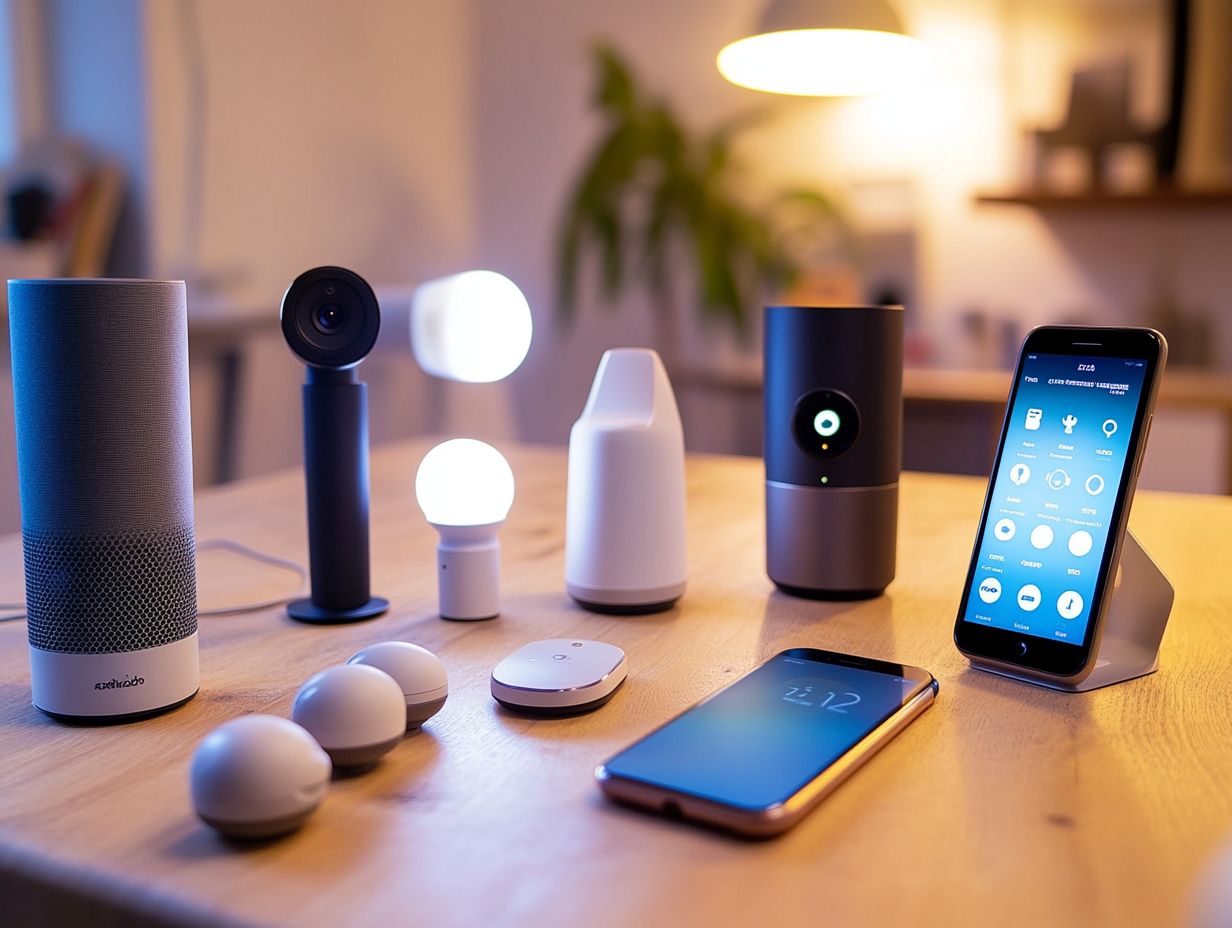
Common issues encountered when setting up a Smart Home Starter Kit can often be addressed through straightforward troubleshooting steps. Users frequently report problems related to device compatibility, network connectivity, and app functionality. However, with the appropriate guidance, these challenges can be effectively managed. Understanding how to troubleshoot smart device management is crucial for maintaining a seamless smart home ecosystem.
For instance, many users often struggle with device compatibility, particularly when trying to integrate products from different brands. To resolve this issue, it is advisable to check for any available firmware updates and ensure that all devices support common communication protocols such as Zigbee or Z-Wave.
Network connectivity problems can also arise, often due to weak Wi-Fi signals. Implementing a mesh network or using a Wi-Fi extender can significantly enhance coverage.
If users experience erratic app functionalities, it is essential to not overlook the importance of regular updates and clearing cache data, as these actions can resolve many performance-related glitches.
Expanding Your Smart Home System
Expanding your Smart Home System presents a wealth of possibilities, enabling you to achieve greater customization and enhanced functionality. As your needs evolve, you can easily integrate additional devices like smart speakers, smart switches, and smart appliances into your current setup.
This level of flexibility not only enriches your smart home experience but also ensures that your home remains aligned with your lifestyle needs as they change over time.
Additional Devices and Integration Options
When considering additional devices for a Smart Home System, it is important to explore integration options that enhance both automation and convenience. Accessories such as smart lights, smart sensors, and various smart home brands offer unique opportunities for customization, ensuring that the smart home aligns with individual preferences and needs.
Plus these essential components, there are numerous other smart home accessories that can significantly enhance the living experience. For example, smart thermostats facilitate energy-efficient climate control through intuitive programming, helping to optimize comfort while reducing utility bills. The integration of smart locks can improve security by allowing remote access management and the creation of temporary codes for guests.
Smart speakers are another great option, functioning as multifunctional hubs that enable control of multiple devices through voice commands, adding an extra layer of convenience. With such a wide array of options available, smart home integration presents a seamless opportunity to personalize and enrich daily life..2509031213252.webp)
